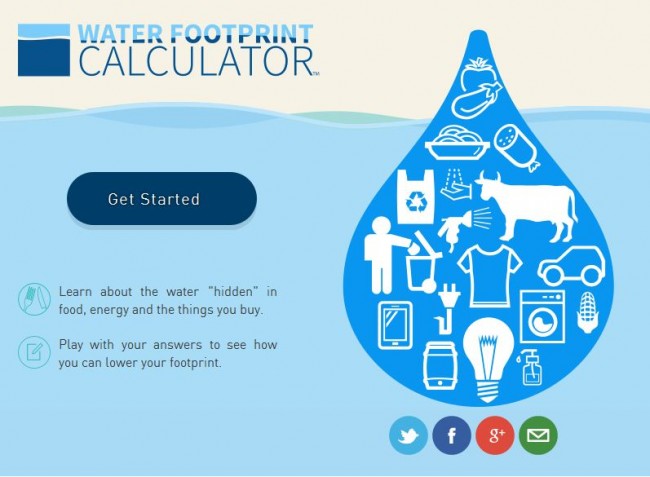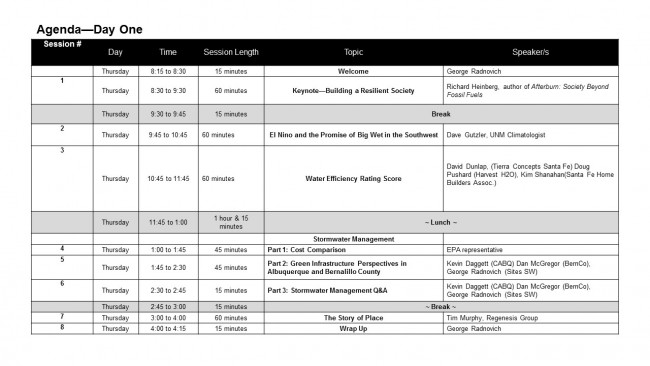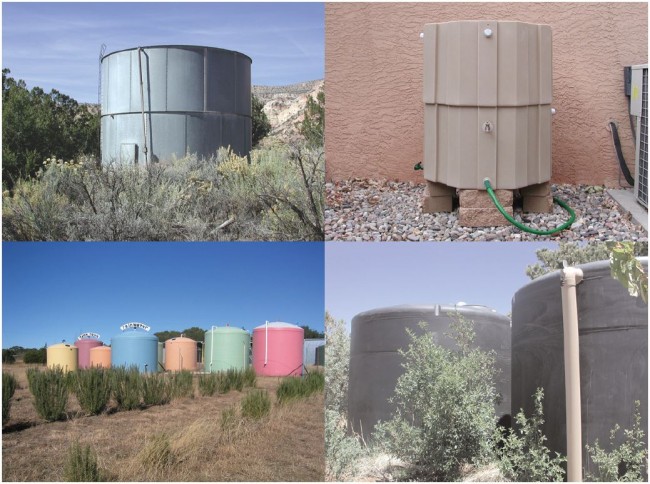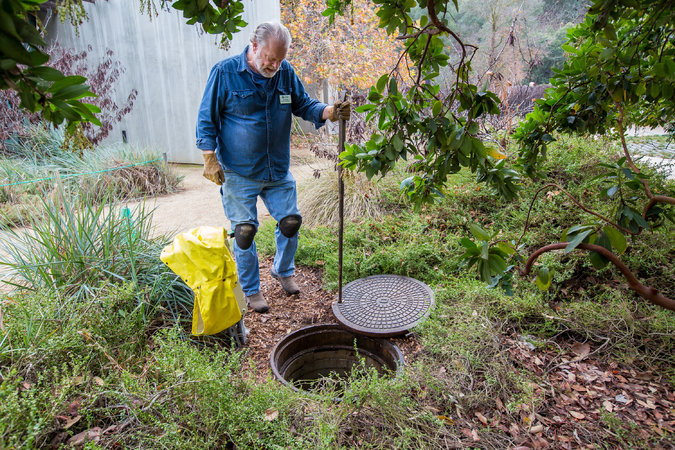The PermaDesign Weblog, with Nate Downey and Melissa McDonald!
Archives from February 2016
A Drop in the Bucket
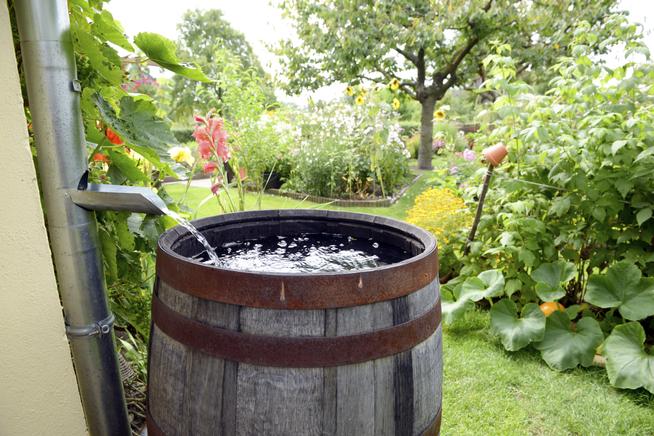
It's a drop in the bucket. Colorado should allow many more forms of water harvesting, but the state is way behind the times on this important issue.
http://www.denverpost.com/editorials/ci_29510442/colorado-should-give-green-light-rain-barrels
02/15/2016 | (0) Comments
Water Footprint
The water meter in front of our homes only tells part of the story when it comes to water use. Our use of water, our footprint, often can extend hundreds or even thousands of miles away depending on the products we use and consume. These out of sight out of mind water realities can have repercussions many times what we think we actually use. This water footprint calculator gives some insight to the water we actually use.
02/14/2016 | (0) Comments
Xeriscape Council of New Mexico 2016 Land&Water Summit
Xeriscape Council of New Mexico will be holding a conference on stormwater solutions February 25th and 26th. There will also be a field trip the 24th covering projects in Bernalillo County and the City of Albuquerque. If you’re interested in stormwater solutions in your projects this will be a great resource.
02/13/2016 | (0) Comments
Bring Back the Wolf
My February column quotes Aldo Leopold as it describes how wolves are really great for rivers. It also promotes an event in Santa Fe with the author of *Last Child in the Woods,* RIchard Louv.
02/13/2016 | (0) Comments
The Animas River Spill
Flint is rightfully grabbing all of the water-news headlines these days, but here's some fascinating footage of the beginnings of the Animas River spill last year. WARNING: There are two places where a high-pitched beep infringes on the sound--but these are brief--and you want the sound on, so you can hear the contractor talking about what to do as the tragedy unfolds.
02/12/2016 | (0) Comments
Roof-Reliant Landscaping™ Step 17B: Elevation Options
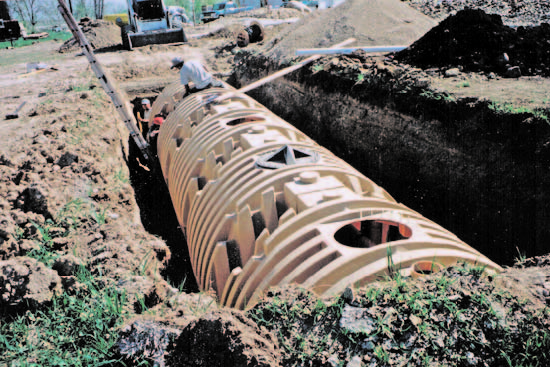
You will need to determine in the early stages of your water harvesting system’s design whether your cistern will be aboveground, partially buried or underground. Here, are some of the advantages and disadvantages of each of these water-storage options.
02/11/2016 | (0) Comments
Stormwater Mismanagement
In California--and pretty much everywhere--It's not about drought. It's about stormwater mismanagement.
02/10/2016 | (0) Comments
Roof-Reliant Landscaping™ Step 17A: Water Storage
The core of a cistern system is a water-storage tank with a water delivery point, a properly sized overflow pipe, an accessible serviceway (remaining locked when not in use), a working vent, an operational water-pump line, pump and tank walls. Optional items include electric lines, a float switch, in-tank filters, a level reader line, an auxiliary water line, and a ladder, rope or cable (for accessing some of the components). The delivery point (labeled point A in the figure below) is the place where roof water enters the tank. It is located near the top of the tank.
02/08/2016 | (0) Comments
Roof-Reliant Landscaping™ Step 16E: Water Conveyance - Filtration
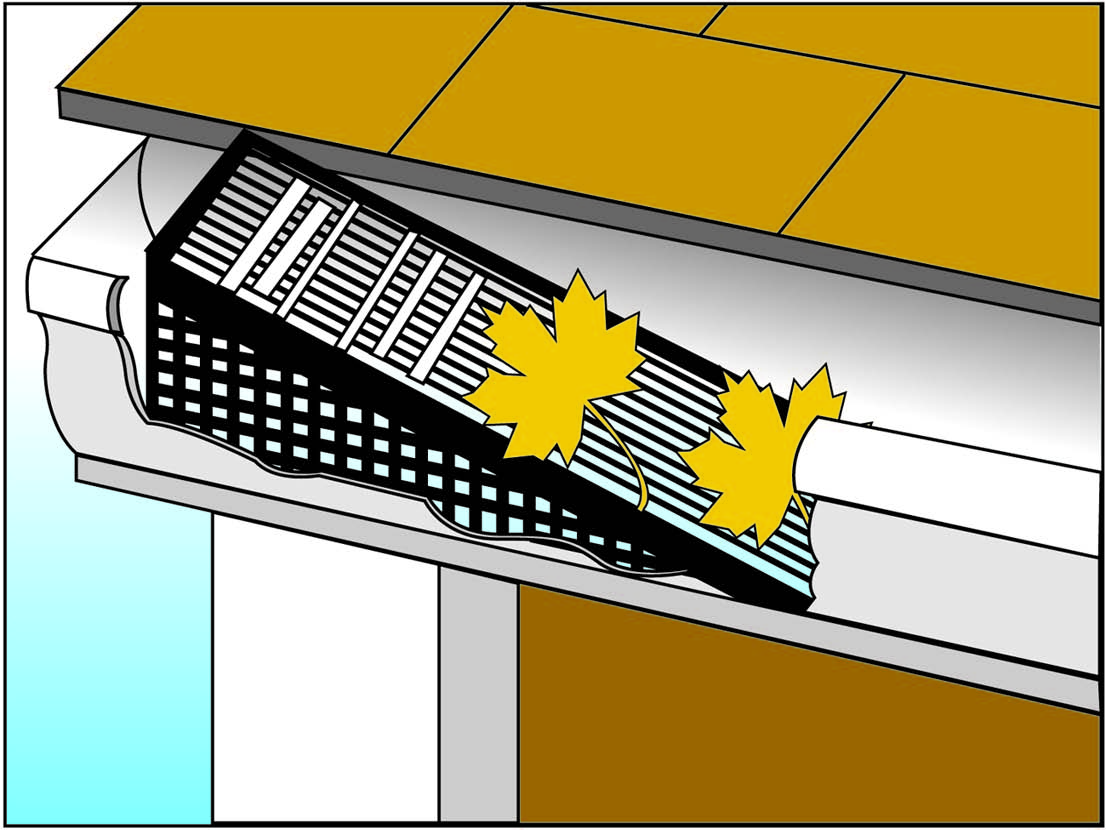
Filtration
The conveyance system presents an easy and effective opportunity to filter the roof water being delivered to your cistern. You will have other chances to filter your water before distributing it to your plants—for example, in your cistern, in your pump house and during distribution through a drip irrigation system—but you should not neglect this first valuable opportunity. Conveyance, or “inlet,” filtration is your best defense against preventing particulate from getting into your tank and against the growth of algae inside your tank, both of which can clog drip irrigation systems and cause pumps to burn out.
02/05/2016 | (0) Comments
Southern California Takes Notice
Great to see Andy Lipkis quoted in this NYT piece!
02/02/2016 | (0) Comments
